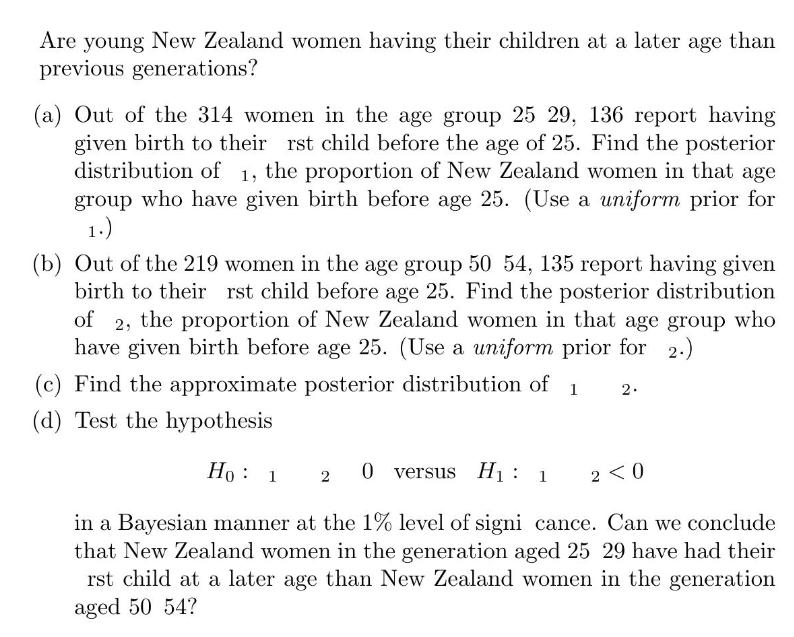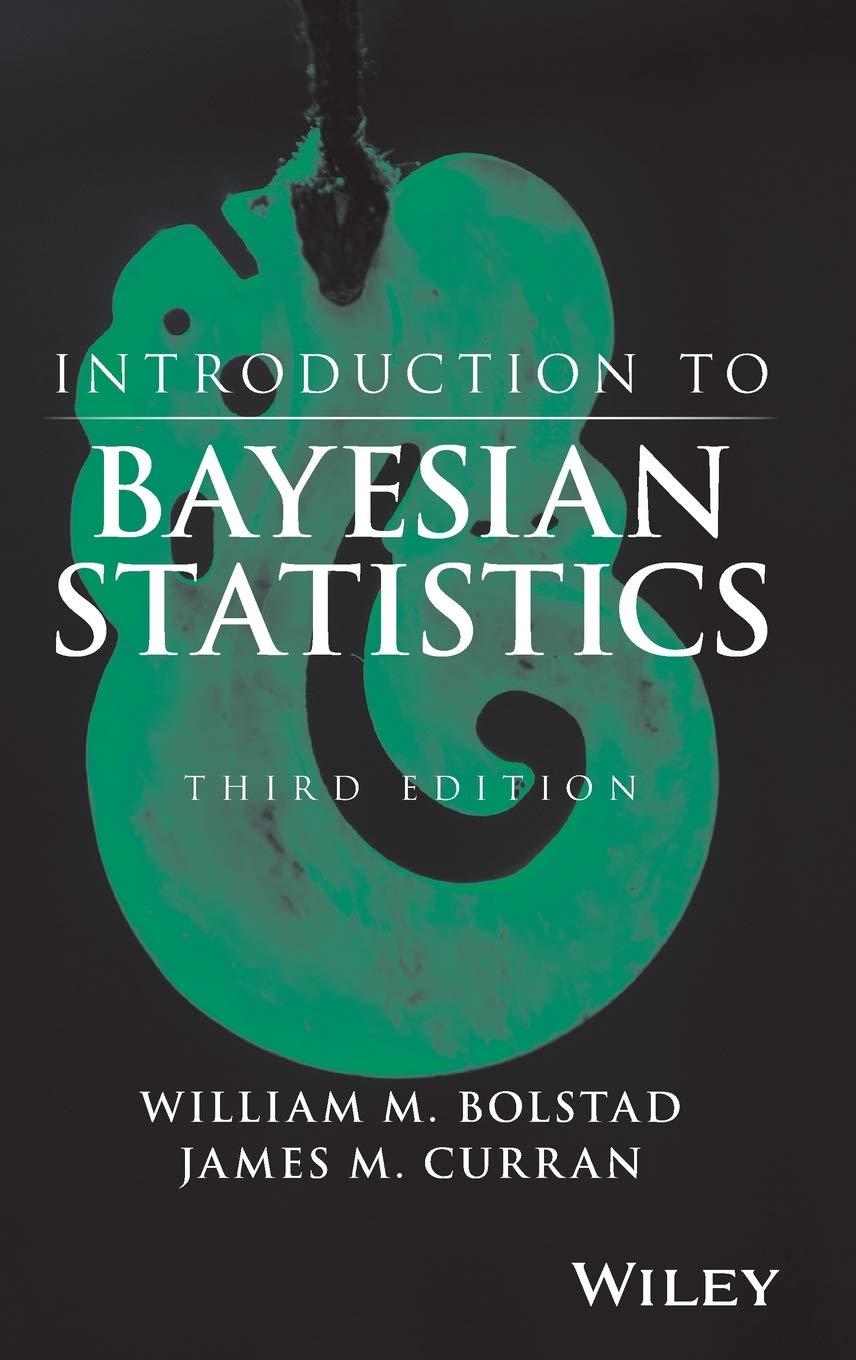Previous research has suggested that the childhood circumcision of males may be a protective factor against the
Question:
Previous research has suggested that the childhood circumcision of males may be a protective factor against the acquisition of sexually transmitted infections (STI). Fergusson et al. (2006) relate the circumcision status and self reported STI history using data from 25-year longitudinal study of a cohort of New Zealand children, known as the Christchurch Health and Development Study.
(a) Out of 356 non-circumcised males, 37 reported having had at least one STI by age 25 . Find the posterior distribution of 1 , the probability a non-circumcised male reports at least one STI by age 25. (Use a beta (1 10) prior for 1.)
(b) Out of the 154 circumcised males, 7 reported having at least one STI by age 25 . Find the posterior distribution of \({ }_{2}\), the probability a circumcised male reports at least one STI by age 25 . (Use a beta (1 10) prior for 2.)
(c) Find the approximate posterior distribution of \(1 \quad{ }_{2}\).
(d) Test the hypothesis
\[
\begin{array}{lllllll}
H_{0}: & 1 & 2 & 0 & \text { versus } & H_{1}: & 1
\end{array}>0
\]
in a Bayesian manner at the \(5 \%\) level of signi cance. What does the result say about the research hypothesis?
Data From Exercise 13

Step by Step Answer:

Introduction To Bayesian Statistics
ISBN: 9781118091562
3rd Edition
Authors: William M. Bolstad, James M. Curran





